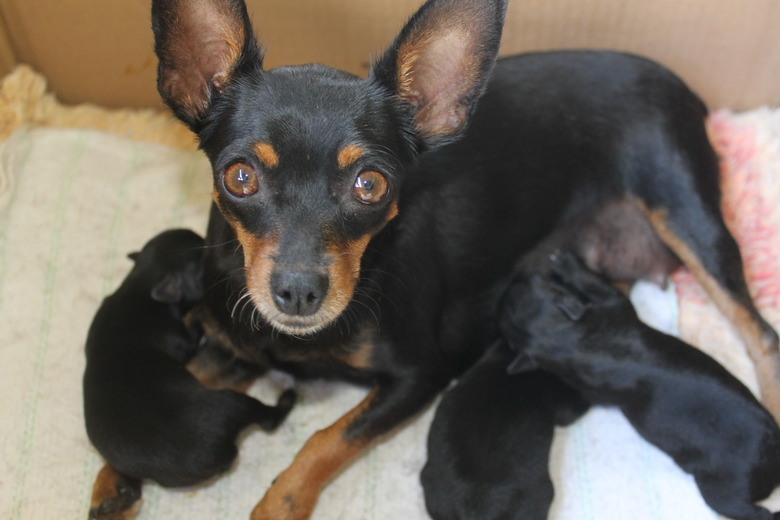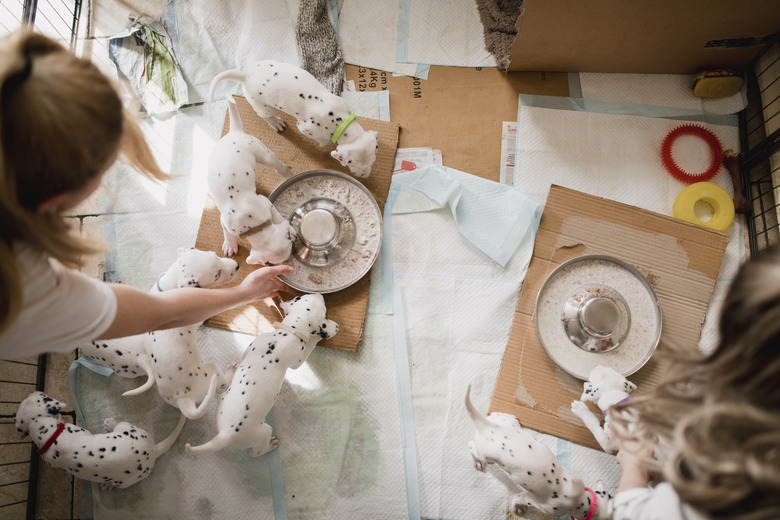How To Know When A Dog Is Done Giving Birth
To some people, the sight of a mother of any species giving birth to her young is one of the most beautiful sights on Earth and to others, it's one of the most horrific. Whichever side of the fence you happen to fall on if you have a dog that is delivering puppies, you'll need to know when she's showing signs of being done. You should also visit the vet in advance so you can know ahead of time how many puppies to expect. This way, you'll know everything is over if all the puppies are out. On the other hand, if she's giving you the signs that she is done with the delivery, or hasn't delivered a puppy for over four hours, but you have reason to believe that not all of the puppies have come out yet, you will want to get in touch with your vet.
Litter size
Litter size
Veterinary Partner says your vet can detect the number of puppies via an X-ray around the sixth week of her approximately eight-week pregnancy. This is when the fetuses' skeletons mineralize, or form structure. Ultrasounds won't be as accurate — it's harder for the vet to count the puppies definitively. Once you know how many puppies to expect, you'll know when all have arrived when the big day comes. This system is not completely foolproof, as there's always the chance one puppy's skeleton might not have completely mineralized at the time of the X-ray, but it's better to be cautious in this situation.
Giving birth
Giving birth
Dog labor, also called whelping, has three stages. In the primary stage, which can last up to 24 hours, the dam stops eating and might become restless. She might nest, creating a coxy site to give birth. Stage two is delivery. The mother begins straining, and the first puppy should arrive within a half-hour. If she's pushing hard and no puppy arrives after 30 minutes, contact the vet.
As each pup arrives, the mother typically licks off the membranes covering the baby's nose. If she doesn't do this, VCA Animal Hospitals says that you must clear its nose or the puppy can suffocate.
Puppies should arrive every half hour to hour, but it's not unusual for a dam to take a break of an hour or two between a few deliveries, especially with a large litter. However, if she fails to birth additional puppies within four hours and you know more are inside her, call your vet.
All finished
All finished
Delivery times vary according to the mother's experience, litter size, and breed. Breeds with slender heads, like collies, usually have faster and easier deliveries than wider-headed canines, like bulldogs. If you're not certain how many puppies your pet was carrying, her behavior may give you a clue that she's done with whelping. After the last puppy arrives, the new mother generally relaxes. Her straining is over, and puppy care begins. At this point, she'll start nursing her brood.
Retained placenta
Retained placenta
The dam will usually expel, and eat, placenta or afterbirth, not to be confused with the membranes covering the face, after each puppy emerges. Sometimes the afterbirth won't emerge immediately. If all or part of a puppy's placenta doesn't leave the uterus, it can have potentially fatal consequences. That's just one reason why your dog and the puppies should visit the vet within 48 hours after delivery.
Normally, a placenta passes within 15 minutes of each puppy's birth. Pet Place says signs of a retained placenta include fever, appetite loss, lethargy, and green vulvular discharge. Your vet can give your dog an injection to stimulate uterine contractions to expel the placenta or its remnants to help expell a trapped placenta or placenta parts. However, according to Pet MD, surgery, including spaying, is required to save extremely sick dogs.
Always check with your veterinarian before changing your pet's diet, medication, or physical activity routines. This information is not a substitute for a vet's opinion.

